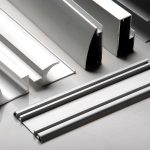Fast growing trees close to buildings can cause unequal settlement when active tree roots dry out the soil causing differential soil shrinkage. Shrinking clays affect the bearing capacity and lead to movement in the building, especially in shallow foundations.
Tree roots can extend over a considerable distance and can extract moisture from as deep as 6 m below the surface. It is, therefore, necessary to make an accurate survey of their position and obtain details of the type of tree, and at the same time establish that the tree is the cause of the damage (see Fig-1).
Poplars and elms with fast growing root systems can be expected to cause serious seasonal movements.

How To Avoid Problems Due To Tree Roots?
One way to avoid root problems with tall trees is to maintain a ‘safe distance’ between the tree and the building. Some species of trees are likely to cause more problems than others. Table-1 shows the different types of trees known to have caused damage, ranking in descending order of threat. It also shows their expected maximum height on clay soils. Planting a tree close to a new or existing building will usually entail some risk of damage. It is, therefore, suggested that the recommendations described in Table-1 are followed.

Buildings can also be damaged when well established trees are removed. The resultant pressures due to the removal of trees and bushes act both vertically and horizontally. In the majority of cases it is the horizontal movement that produces the greatest damage, particularly in the upper layer of clay. In such cases there is a danger of the clay expanding over a period of years as it reabsorbs moisture causing the foundation to ‘heave’.
Where window sills crack and rise in the middle this is an indication of soil heave.
Differential movements will take place resulting in cracks in walls and partitions. In such cases the removal of a tree may do more harm than good.



Comments are closed